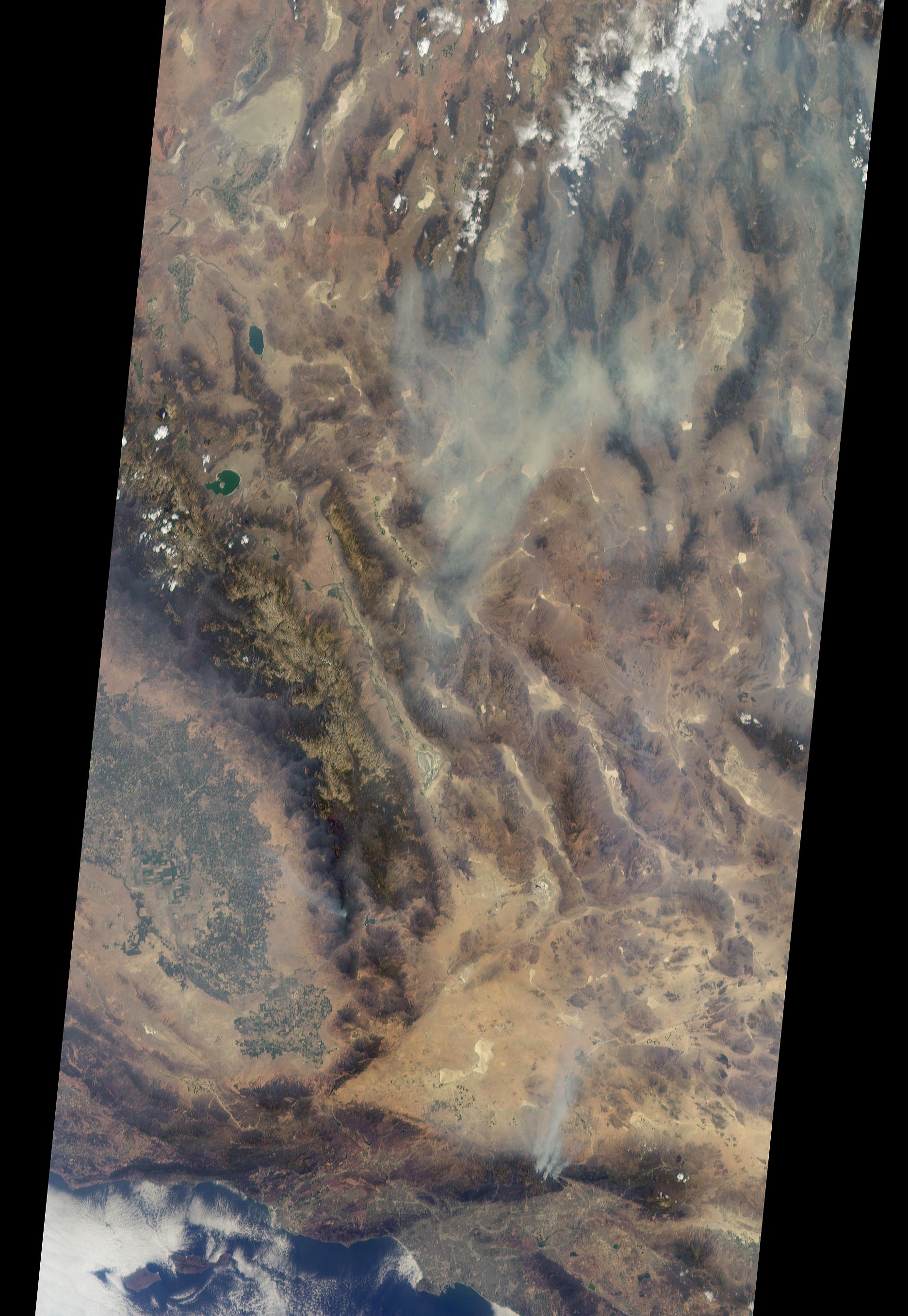Sprawling Blue Cut Wildfire in California Spied by NASA Satellites

As a wildfire blazes through a mountain pass in Southern California, two NASA satellites were able to snap photos of the smoke from space.
The Blue Cut fire, named after the hiking trail where the blaze began, has been spreading through the mountains and deserts east of Los Angeles since Tuesday (Aug. 16) morning. Two days later, the fire engulfed about 40 square miles of land, according to the Associated Press. Extreme heat, high winds and a persistent drought in the region are exacerbating the spread of the fire.
NASA's Terra satellite was able to catch a view of the smoke plumes rising and spreading over California's skies when the satellite flew over the area at 11:50 a.m. on Wednesday (Aug. 17). With an instrument called the Multi-angle Imaging SpectroRadiometer (MISR), the spacecraft was able to capture the photo in natural colors and high spatial detail. [Wildfires Seen from Space: Satellite Photos]
MISR's camera views Earth at an angle instead of looking straight down, which gives the instrument a better view of the rising smoke plumes than it would get from a conventional, vertical image.
Terra's view shows the city of Los Angeles near the coast while three smoke plumes rise in the mountains to the north of the city.
The day before NASA's Terra satellite captured its image of the wildfire, another NASA satellite flew over the area. This satellite, named Aqua, took another photo of the fire just 3 hours after the event was first reported. That image shows only one prominent smoke plume north of San Bernardino.
The Aqua satellite used an instrument called the Moderate Resolution Imaging SpectroRadiometer (MODIS) to take this picture, which is also in natural color. But Terra was also able to see the actively burning areas, which are highlighted in red, using thermal-imaging techniques.
Breaking space news, the latest updates on rocket launches, skywatching events and more!
Email Hanneke Weitering at hweitering@space.com or follow her @hannekescience. Follow us @Spacedotcom, Facebookand Google+. Original article on Space.com.

Hanneke Weitering is a multimedia journalist in the Pacific Northwest reporting on the future of aviation at FutureFlight.aero and Aviation International News and was previously the Editor for Spaceflight and Astronomy news here at Space.com. As an editor with over 10 years of experience in science journalism she has previously written for Scholastic Classroom Magazines, MedPage Today and The Joint Institute for Computational Sciences at Oak Ridge National Laboratory. After studying physics at the University of Tennessee in her hometown of Knoxville, she earned her graduate degree in Science, Health and Environmental Reporting (SHERP) from New York University. Hanneke joined the Space.com team in 2016 as a staff writer and producer, covering topics including spaceflight and astronomy. She currently lives in Seattle, home of the Space Needle, with her cat and two snakes. In her spare time, Hanneke enjoys exploring the Rocky Mountains, basking in nature and looking for dark skies to gaze at the cosmos.

